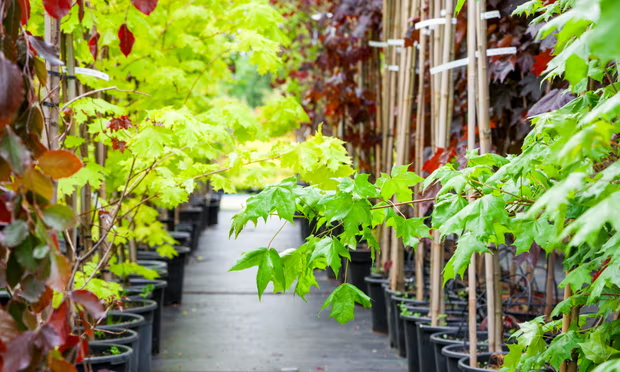In Short : Yes, some companies believe that a process called enhanced weathering, involving the use of rocks, can help absorb enough CO2 to combat climate change. The idea is to accelerate the natural process where rocks react with carbon dioxide from the air, turning it into mineral forms that can be stored for long periods. While this concept is still in the early stages of development, it represents a potential technology for carbon capture and storage, contributing to global efforts to mitigate climate change.
In Detail : Stripe, Alphabet, Shopify, and a slew of other companies plan to spend more than $57 million cumulatively to fight climate change by spreading crushed rock over farmland.
The aim is to use rocks’ natural ability to absorb carbon dioxide, which might sound low-tech, but speeding up the process and finding a way to reliably measure how much CO2 is sequestered has proven pretty hard. It’s a tactic for trapping planet-heating carbon dioxide called “enhanced weathering” that researchers have studied for decades, but it has lagged behind other emerging technologies in moving to commercialization.
The deal was announced today by Frontier, a carbon removal initiative led by Stripe, Alphabet, Shopify, and McKinsey Sustainability. Autodesk, H&M Group, JPMorgan Chase, Workday, Zendesk, Canva, and Boom Supersonic are also among the more than a dozen companies that signed onto the deal.
Their offtake agreements are with agtech startup Lithos Carbon, which says it has developed a way to empirically measure how much carbon is trapped through enhanced weathering rather than having to rely on models.
Essentially, the companies are banking on alkaline rocks that absorb CO2 from the air when they break down or “weather.” In nature, this happens when rain, wind, or waves work away at the rocks. Unassisted, this process of trapping CO2 might take thousands of years.
People can intervene by grinding rocks like basalt into gravel or dust to speed up the process. Doing so and then splaying the crushed rock out across a swath of land increases surface area and exposes it to more ambient carbon dioxide to absorb.
Lithos gives crushed basalt to farmers to spread across their fields for free; they might use it to manage the pH balance of the soil. The basalt then reacts with rainwater to trap carbon dioxide in the air as a bicarbonate. Eventually, the bicarbonate moves through groundwater out to the sea where Lithos expects it to be stored for at least 10,000 years or longer.
Then comes the really hard part: Lithos has to be able to tell companies how much carbon dioxide has been captured and safely stored. The company says it does this by taking soil samples, monitoring the chemical composition of the soil as a way to judge how much CO2 was removed. It’s a process that grew out of research at Yale University.
It’s crucial to get this part right, not only to assure that companies are getting what they pay for but also to show that they’re actually combating climate change. When it comes to Lithos’ method for measuring how much carbon dioxide is sequestered, “this is very challenging,” says Oliver Jagoutz, professor of geology at MIT. “And while I see this as a newer approach, I’m very critical whether that is a game changer.”
“[Lithos’ measurement] method is incremental improvement, but there are still major unresolved questions,” Jagoutz tells The Verge.
Data shared by the company in a pre-print study essentially show “an absolute maximum estimate of what can be, and the reality unfortunately is much more complicated,” he added. Namely, there’s a risk of overestimating how much carbon dioxide has been sequestered when not fully accounting for how fertilizers in the soil affect the process.
There are other potential side effects to try to avoid with enhanced weathering. Flooding any particular area with too much bicarbonate is one issue, since that could have its own effects on ecosystems. The environmental footprint of mining, crushing, and transporting rock need to be taken into consideration, too. Lithos uses waste material from quarries to minimize those kinds of impacts. At farms, it’ll also be important to make sure the dust doesn’t get airborne and affect air quality.
But if all those challenges can be overcome, Jagoutz is optimistic about the future of enhanced weathering as a strategy for fighting climate change. “I think it’s great that people try new methods and go to the field level with these different ideas that have been circulating,” he says.
To be sure, environmental advocates have also voiced concern about companies paying to take carbon dioxide out of the atmosphere rather than focusing all their efforts on preventing fossil fuel emissions by transitioning to clean energy.
To that end, Lithos CEO Mary Yap says she sees its strategy as more of a “mop” than a cure-all for climate change. “You cannot mop up a flood … definitely stop the flood or else all of us are doomed … But you do need a mop because the faucet might not be completely off yet,” she says. You also need the “mop” to take care of damage that’s been done already, she says, in this case by greenhouse gas emissions that have built up in the atmosphere since the industrial revolution.
This $57.1 million offtake agreement for enhanced weathering is the first of its kind, according to Frontier. That’s supposed to cover the costs of sequestering more than 154,000 tons of CO2 by 2028, equivalent to taking about 34,000 cars off the road for a year. Breaking down to roughly $370 per ton of CO2 removed, it’s still costly but notably cheaper than new industrial plants being built to filter the greenhouse gas out of the air for around $600 a ton.
“Enhanced weathering has the potential to get to very large scale at relatively low costs in a pretty short amount of time,” says Nan Ransohoff, head of Frontier.

